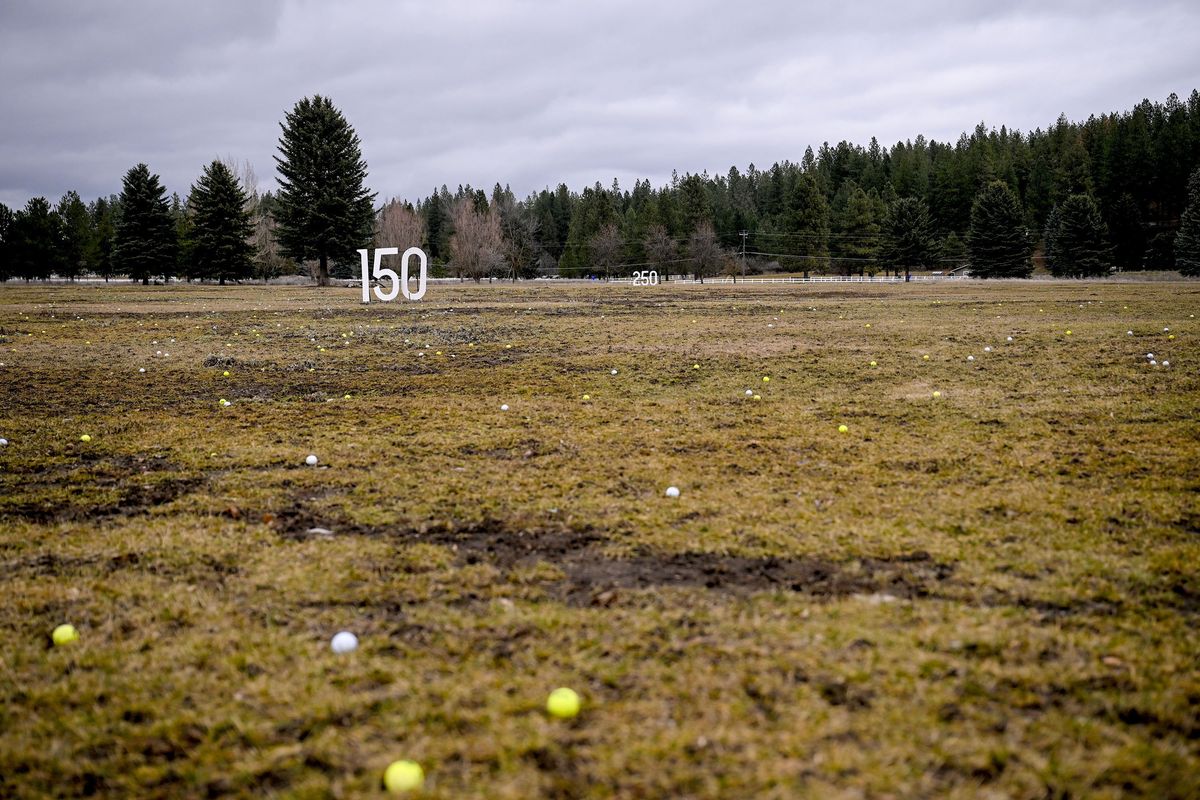Painted Hills development saga could finally come to close this spring

The fate of a 584-unit housing development at the site of a formerly bankrupted golf course in Spokane Valley could be decided by early March.
Dave Black of Black Realty Inc. purchased the nearly 100-acre Painted Hills Golf Course property for $1.1 million at a 2013 auction with the intent of converting the site into a mixed residential and commercial development with homes, apartments and local shops.
Neighbors of the property resisted almost immediately, forming the Painted Hills Preservation Association and sending hundreds of letters to the city of Spokane Valley over the years to oppose the project.
After hearing from the city, the developers and the neighborhood association last week, land-use Hearing Examiner Andy Kottkamp is expected to rule on the Painted Hills Preservation Association’s appeal of the environmental impact statement, as well as the application for the development, by March 8.
Buckets of water and mounds of dirt
The association’s appeal of the environmental impact statement submitted and finalized last June centers around the argument that developers failed to sufficiently consider alternative, less impactful development plans for the site.
They raised concerns over the noise, traffic and quality of life changes that construction could bring.
One of the focal points is how the development could affect the flow of water in the area.
The site lies within a floodplain for nearby Chester Creek and sits over the Spokane Valley-Rathdrum Aquifer. As preservation association member George Simon testified last week, neighbors are concerned that any action taken to mitigate potential flood risks could push that risk on their properties.
Developers have proposed dumping 330,000 cubic yards of dirt atop the old course to bring it above the floodplain – the equivalent of more than 21,000 commercial dump-truck loads.
A memorandum on the hauling plan published by the engineers overseeing the project, Whipple Consulting Engineers, said there would be minimal impact on local traffic from the haul operation.
The State Environmental Policy Act requires environmental impact statements to consider alternatives that could reasonably attain a project’s objective, which the developers said they did by including two plans for development.
Option 1 and Option 2 differ mainly around the size of the drainage basin that would be built on the north-end of the development to deal with potential overflow from the creek.
The developers have also worked with the Federal Emergency Management Agency to design a system of channels underneath the road coming into the site to deal with potential overflow from Chester Creek, according to Brian Walker, a broker with NAI Black who owns 50% of the property. Those channels will move the water to large drainage swales that will filter the water before it seeps into the aquifer.
“I think we’ve overengineered to handle any concerns about the water,” Walker told The Spokesman-Review last year. “We can handle way, way more water than is coming to the property now.”
Developers have posited that the system be owned and operated by a homeowners association on the Painted Hills property, which gave the city trepidation over the future of the system. Representatives of the city asked for a flood control zone district be created prior to the approval of any plans, to ensure the proposed flood system is monitored and maintained.
Black Realty said it supports the notion and will oversee any maintenance or improvements to the system for as long as they own the property, but they are still awaiting approval from FEMA on the original concept. Their lawyers argued that once that process is completed, and the design is approved and implemented, they can assist the county in helping form a flood control district.
“Not that their conditions are wrong, but their order is difficult to deal with,” said Todd Whipple, president of Whipple Consulting Engineers.
But what about the roads?
Neighbors are also concerned about traffic, pedestrian safety and road conditions.
The city conducted a traffic study in 2016-17 that found the project would generate more traffic but not create problems.
The city did ask the developers to assist in improving the intersections of 16th Avenue and Pines Road and 32nd Avenue and Pines Road, by adding a traffic signal to the former and a northbound turn lane to the latter. Other intersections were identified as potentially lacking space for stopped cars with future growth.
The developers were asked to provide frontage improvements to Dishman-Mica Road, Thorpe Road and Madison Road, a two-way-left-turn-lane north of the Chester Creek Bridge and private drives along Dishman-Mica Road for entry and exit out of the development.
Jerremy Clark, senior traffic engineer for Spokane Valley, said he would like to see an update to the traffic analysis if the examiner gives the thumbs -up for the project because of the lapsed time.
“This has been an ongoing comment that we’ve received and also provided,” Clark said.
A change of views
Several public comments during the hearing touched on concerns regarding wildlife.
Simon said he’s lived there about five years. He said his home overlooks the northeast corner of the proposed development, and said he sees a fair amount of wildlife on the former golf course.
“We see deer in there, we’ve seen two deer give birth, and of course there’s hawks and other things,” Simon said. “It’s a nice view.”
But motorcyclists, four-wheelers and litterers have also taken to the area, leaving tire ruts, abandoned vehicles and bags of trash.
While the preservation association says developing the land would not be congruent with the neighboring plots, the developers have committed to leaving 30 acres of open space, complete with a trail system.
The city will release information about the project as it moves forward at spokanevalley.org/paintedhillsdeis.